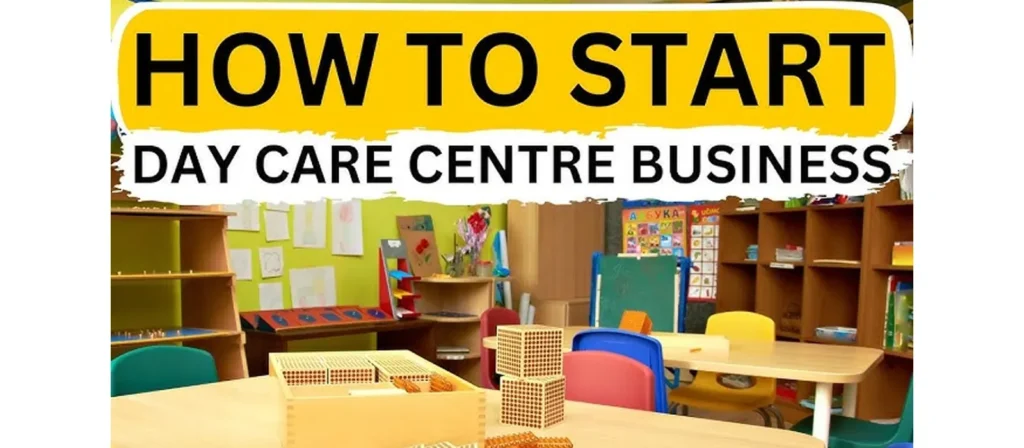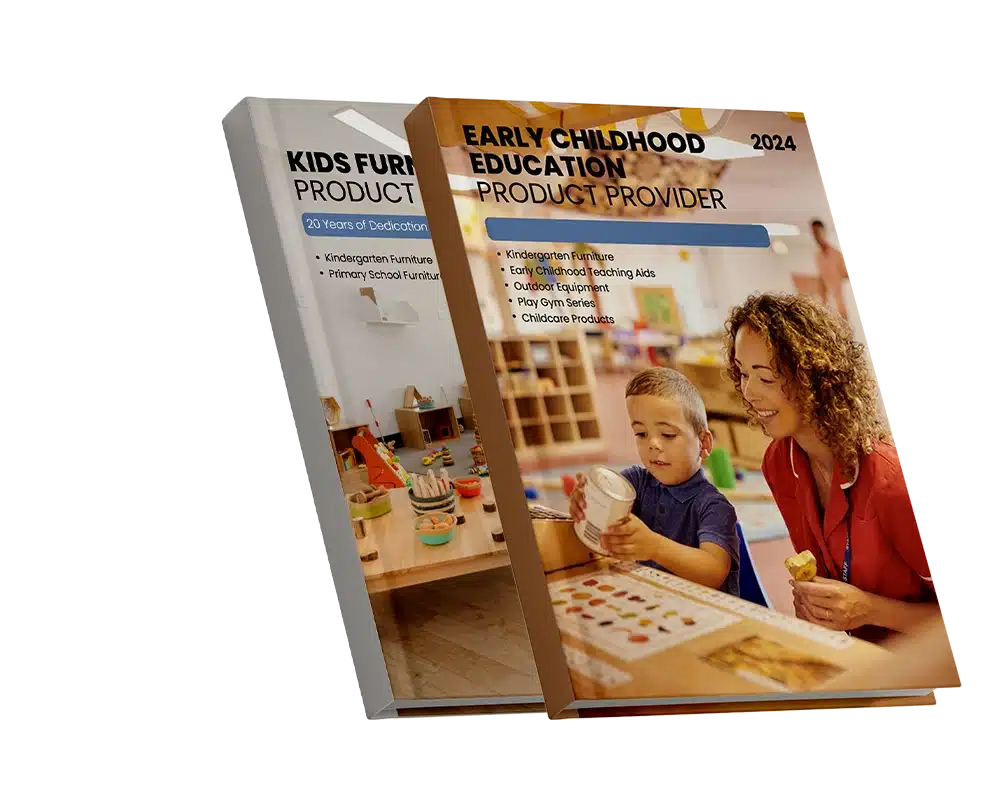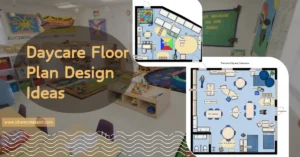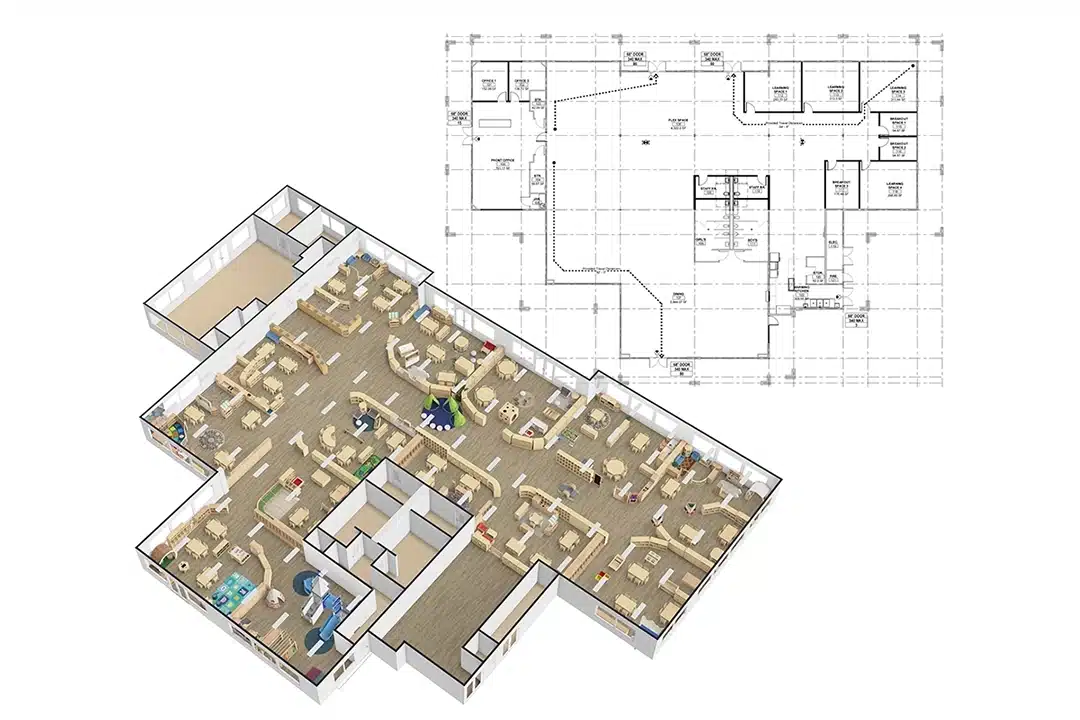Do you want to know how to start a daycare but feel overwhelmed by the process? Are you unsure about the legal requirements, startup costs, or the best way to attract parents? Starting a daycare business can be exciting and challenging, especially if you’re new to the childcare industry. But with the right guidance, you can turn your passion for working with children into a successful business.
Starting a daycare business can be rewarding and profitable but requires careful planning, legal compliance, and strategic marketing. Whether you want to open a home daycare or a full-scale childcare center, this guide will walk you through each step to ensure your success.
This guide covers everything from legal requirements and budgeting to hiring staff and marketing strategies. Let’s dive in and turn your daycare business dream into reality!
Why Start a Daycare?
The demand for quality childcare is at an all-time high, making a daycare business financially rewarding and personally fulfilling. Parents need safe, nurturing environments where their children can learn and grow while they work. Additionally, government grants and tax benefits for childcare providers make this industry attractive for entrepreneurs.
A daycare business offers:
- High demand and recurring revenue – Parents need childcare services daily.
- Flexible business models – You can start small with a home daycare and expand later.
- Emotional satisfaction – You’ll play a vital role in children’s early development.
- Community impact – Providing reliable childcare strengthens local economies.

How Much Does It Cost to Start a Daycare Center?
The cost of starting a daycare varies widely based on location, size, and services offered. On average:
- Home-Based Daycare: $2,000 – $10,000
- Small Commercial Daycare: $50,000 – $150,000
- Large Commercial Daycare: $150,000 – $500,000
Key expenses include:
- Licensing and Permits: $500 – $5,000
- Facility Rental or Purchase: $1,000 – $10,000/month
- Insurance: $500 – $5,000 annually
- Staff Salaries: $20,000 – $40,000 per staff member
- Furniture and Equipment: $5,000 – $50,000
- Marketing: $1,000 – $5,000
The good news is that funding options, including grants, loans, and government subsidies, are available to help cover startup costs.

Steps on How to Start a Daycare Business
Starting a daycare business involves a detailed process that requires thorough research, strategic planning, and adherence to regulatory requirements. Below, I outline the essential steps you must take, divided into several key phases. Each phase is vital for ensuring that your daycare center is safe, compliant, and well-prepared to meet the needs of children and parents alike.
Step 1: Research and Planning
Thorough research and planning are essential before tackling the logistics of start a daycare. This step involves understanding the childcare industry, identifying your target market, analyzing competitors, and learning about licensing and regulatory requirements.
Understanding Market Demand
- Identify the Need: Start by assessing whether your area strongly demands daycare services. Conduct surveys, analyze census data, and consult with local parents to gauge interest.
- Demographics: Determine the number of working parents, single-parent households, and young families in your region. Areas with a high concentration of families with young children typically need daycare services more.
- Economic Considerations: Consider the average household income to determine the affordability of your daycare services. Families in high-income neighborhoods may prefer premium daycare centers, while those in middle—to low-income areas may require more budget-friendly options.
Competitor Analysis
- Visit Existing Daycare Centers: Observe their operations, facilities, and educational approaches. Take note of their strengths and weaknesses.
- Evaluate Their Pricing Models: Understanding competitor pricing can help you set competitive rates while ensuring profitability.
- Identify Gaps in Service: If competitors have long waitlists or lack specialized programs (e.g., bilingual education, STEM-focused curriculum), these could be opportunities for differentiation.
State and Local Regulations
Each state has specific childcare licensing requirements, and failing to comply can result in fines or closure. Key areas to research include:
- Staff-to-Child Ratios: Regulations dictate the number of caregivers required per child, depending on age.
- Facility Requirements: Minimum square footage per child, outdoor play space, and health and safety standards.
- Educational and Training Requirements: Many states require daycare owners and staff to complete early childhood education or childcare training.

Step 2: Choose the Right Location
Selecting the optimal location for your daycare center is a decision that can significantly influence your business success. The right location should be in a safe and accessible neighborhood convenient for working parents. Proximity to residential areas or business districts can enhance enrollment numbers. Additionally, the facility must have ample indoor and outdoor space to provide children with a stimulating and secure environment.
When choosing your location, rent, utilities, and maintenance costs must also be considered. A prime location might come with higher costs, but the investment could be justified by increased enrollment and the ability to offer superior services.
The local community’s reputation and the area’s overall socioeconomic status can also affect enrollment trends. A well-chosen location not only increases the attractiveness of your daycare but also contributes to your long-term operational success. Carefully consider all of these factors to make an informed decision about start a daycare that will benefit your business for many years.

Step 3: Get Insurance for Your Daycare Business
Running a daycare has potential risks, including injuries, property damage, and legal liabilities. Securing proper insurance coverage is essential to protect your business and provide peace of mind to parents.
Types of Insurance Needed
- General Liability Insurance: This covers injuries on your premises, whether to children, staff, or visitors.
- Property Insurance: Protects against damage to your daycare facility, including furniture, toys, and educational materials.
- Workers’ Compensation Insurance: Required if you hire employees; covers workplace injuries or illnesses.
- Professional Liability Insurance (Errors & Omissions): Protects against negligence claims or inadequate supervision.
- Business Interruption Insurance: Provides financial support in case of forced closures due to unforeseen events (e.g., natural disasters, pandemics).

Step 4: Get Your Daycare Supplies and Equipment Ready
A well-equipped daycare creates a safe, engaging, and educational environment for children. Before start a daycare, ensure you have the necessary supplies to support daily activities and comply with safety standards.
- Child-sized tables and chairs
- Cribs, cots, and nap mats
- Storage shelves for toys and books
- High chairs for infants
- Changing tables and diaper storage
- Age-appropriate toys (building blocks, dolls, puzzles, board games)
- Books and storytelling materials
- Sensory play materials (sand tables, water tables, play dough)
- Art supplies (crayons, markers, paper, glue, scissors)
- First aid kits
- Fire extinguishers and smoke detectors
- Baby gates and outlet covers
- Emergency contact lists and evacuation plans


Step 5: Choose a Business Structure
The legal structure of your daycare affects taxes, liability, and operational control. Selecting the right structure is crucial for legal and financial protection.
| Structure | Pros | Cons |
|---|---|---|
| Sole Proprietorship | Simple to set up, minimal paperwork | Personal liability for business debts |
| General Partnership | Shared responsibilities, low startup costs | Partners share liability for business debts |
| Limited Liability Company (LLC) | Protects personal assets, flexible tax benefits | Requires formal registration, filing fees |
| Corporation | Best for large daycare centers, potential for investors | More complex setup, higher compliance costs |
Step 6: Choose a Daycare Business Name
Choosing an appropriate and memorable name for your daycare is a critical branding decision before starting a daycare. Your business name should reflect your daycare center’s values, mission, and services. It must be easy to pronounce, spell, and remember, enhancing your marketing efforts. A well-chosen name can set the tone for the environment you intend to create—nurturing, playful, educational, or innovative. Once you have a few potential names, check for trademark availability and domain name accessibility to ensure consistency across all your marketing channels.

Step 7: Create a Daycare Business Plan
A comprehensive business plan is essential for making your daycare vision a reality. This plan should outline your mission, vision, and operational strategy while addressing market research, funding requirements, staffing, and marketing strategies. Your business plan is a roadmap for your daycare center’s launch and future growth. It is also critical when applying for loans or seeking investors, as it provides a detailed overview of your financial projections and operational strategies. A well-crafted business plan details every aspect of your venture, from the educational philosophy to the day-to-day management practices, ensuring that you have considered all potential challenges and opportunities.
Creating a business plan forces you to consider each element of your daycare center’s operation carefully. It involves setting realistic goals, identifying potential risks, and outlining contingency plans. Developing this plan in collaboration with early childhood education and business management experts ensures that all aspects of your daycare are thoroughly considered. This comprehensive document becomes the blueprint for your business, guiding your decisions from startup to growth phases and helping you remain focused on your long-term objectives.
Step 8: Get Licenses and Permits
Licenses and permits are fundamental to operating a legal and safe daycare center. The requirements for childcare facilities vary significantly by region, so it is essential to research and comply with local regulations. Generally, you must obtain a childcare license, pass safety inspections, and ensure your facility meets health and building codes. This step involves a thorough documentation process, background checks for all staff, and potentially attending mandatory training sessions. Compliance helps avoid legal repercussions and builds trust with parents and regulatory bodies. Make sure to allocate sufficient time and resources to complete all licensing procedures before opening your doors to children.

Step 9: Secure Funding
Starting a daycare requires capital for rent, equipment, staff salaries, and licensing fees. If you don’t have enough personal savings, consider these funding options:
Sources of Daycare Business Funding
- Small Business Loans:
- Offered by banks, credit unions, and the Small Business Administration (SBA).
- Requires a strong credit score and business plan.
- Government Grants & Subsidies:
- Some states offer grants to licensed childcare providers.
- Check with organizations like the Child Care and Development Fund (CCDF).
- Crowdfunding & Community Support:
- Use platforms like GoFundMe or Kickstarter to raise funds.
- Local businesses may sponsor or donate supplies.
- Investor Funding:
- If planning a large-scale daycare, you can pitch to investors in exchange for equity.
- Personal Loans & Savings:
- Using personal savings or borrowing from family/friends is an option but carries risk.

Step 10: Design Your Daycare Center
Designing your daycare center is not just about aesthetics—it’s about creating a functional, safe, and stimulating environment that encourages learning and growth. The layout should facilitate easy supervision while providing dedicated areas for activities such as play, learning, and rest. A well-designed center considers child safety, accessibility, and flexibility in use. Incorporate age-appropriate furniture, vibrant colors, and interactive elements that support various learning styles. The design should also allow for future expansion or modification as your daycare grows and evolves. Consulting with architects or interior designers specializing in educational spaces can be very beneficial. Their expertise ensures that your design meets both regulatory requirements and the developmental needs of the children.
Step 11: Hire Qualified Staff
The quality of your daycare staff plays a crucial role in ensuring a safe, nurturing, and educational environment for children. Parents want to know that their children are in the hands of trained professionals who are not only experienced but also genuinely care for each child’s well-being.
Understanding Staffing Requirements
Each state has specific staff-to-child ratio regulations based on age groups. These ratios ensure that every child gets the attention they need. Below is a general guideline:
| Age Group | Staff-to-Child Ratio | Maximum Group Size |
|---|---|---|
| Infants (0-12 months) | 1:3 or 1:4 | 6-12 |
| Toddlers (1-2 years) | 1:4 or 1:5 | 8-10 |
| Preschoolers (3-4 years) | 1:8 or 1:10 | 16-20 |
| School-Age (5+ years) | 1:10 or 1:12 | 20-24 |
Types of Daycare Staff to Hire
- Lead Teachers: Must have experience in early childhood education (ECE) and be CPR-certified.
- Assistant Teachers: Provide classroom support and help maintain daily activities.
- Administrative Staff: Handles enrollment, scheduling, and parent communications.
- Kitchen Staff: If providing meals, a cook with knowledge of child nutrition is essential.
- Janitorial Staff: Ensures daily cleaning and hygiene standards.
Hiring Process & Qualifications
- Post Job Openings: Advertise on job boards, social media, and childcare-specific websites (e.g., Care.com, Indeed, or LinkedIn).
- Screen Resumes & Conduct Background Checks: A clean background check is mandatory for anyone working with children.
- Interview Candidates: Ask about their experience, teaching philosophy, and ability to handle emergencies.
- Trial Period & Training: Provide a probation period where new hires work under supervision.
Invest in ongoing staff training to keep employees up to date with childcare trends and best practices. Happy, well-trained staff lead to higher retention rates and better care for children.

Step 12: Create a Business Brochure
A well-designed business brochure and a comprehensive marketing strategy are crucial for attracting parents to your daycare center. Your brochure should succinctly convey your daycare’s mission, values, unique selling points, and the range of services offered. Incorporate high-quality images of your facility, engaging descriptions of your educational approach, and testimonials from satisfied parents if available. Once your brochure is complete, integrate it into your broader marketing campaign. This campaign can include a professional website, social media presence, local community outreach, and participation in childcare expos and events.
Step 13: Market Your Daycare Business
Marketing plays a crucial role in the success of your daycare business. No matter how well-designed your daycare center is, parents need to know about it before they can enroll their children. An effective marketing strategy ensures visibility, builds credibility, and helps you reach your target audience.
Step 14: Hold an Opening Ceremony
An opening ceremony is the final step to officially launching your daycare center. This event celebrates the culmination of your hard work and serves as an excellent marketing opportunity. Invite local community leaders, parents, and media representatives to tour your facility, meet your staff, and experience your daycare’s environment firsthand. An engaging opening event creates buzz and lays the foundation for word-of-mouth referrals, which are invaluable in the childcare industry. Ensure the ceremony highlights your commitment to safety, education, and community engagement. A well-organized opening event can set the tone for your daycare’s future, helping to build trust and excitement among prospective families.
Planning the opening ceremony requires careful coordination of logistics, including catering, activities for children, and informative presentations about your daycare’s programs. It is an opportunity to showcase your facility’s unique design, innovative teaching methods, and commitment to nurturing every child’s potential. Celebrating this milestone with the community signals that your daycare is ready to provide exceptional care and educational services from day one.

Should You Buy a Daycare Center Franchise or Start Your Daycare Center?
Both options have advantages and challenges. A franchise offers brand recognition, a proven business model, and support but has high initial fees and limited flexibility. Starting an independent daycare gives you full control over policies, pricing, and curriculum but requires more branding, marketing, and operations effort.
Advantages of Buying a Daycare Franchise
Purchasing a daycare franchise provides a structured business model, reducing the risks of starting from scratch. Key benefits include:
- Brand Recognition: Parents are more likely to trust a well-known franchise than an unknown independent daycare.
- Proven Business Model: Franchisors provide operating procedures, curriculum guidance, and staff training.
- Marketing and Advertising Support: Franchise networks often have national marketing campaigns that drive enrollment.
- Access to Resources: Franchises offer bulk purchasing discounts for supplies, software, and insurance.
However, franchises also have significant downsides:
- High Initial Investment: Franchise fees can range from $100,000 to $500,000.
- Ongoing Royalties: Many franchisors require royalty payments (typically 5-10% of revenue).
- Less Flexibility: You must follow the franchisor’s policies, which may limit creativity and customization.
Advantages of Starting Your Daycare
If you prefer full control over your business, an independent daycare might be the better choice. Benefits include:
- Lower Startup Costs: Without franchise fees, your initial investment can be significantly lower.
- Operational Flexibility: You set your policies, curriculum, pricing, and branding.
- Greater Profit Potential: You keep 100% of the revenue without paying royalties.
However, starting from scratch comes with challenges:
- No Built-In Brand Recognition: You must work harder to gain parents’ trust and build a strong reputation.
- More Responsibility: Marketing, curriculum development, and compliance fall entirely on you.
- Higher Risk: Without a franchise’s support, you face a steeper learning curve.

What Education and Experience Do Daycare Center Owners and Employees Need?
Running a daycare is not just about supervising children—it requires expertise in child development, business management, and safety regulations.
Education Requirements for Daycare Owners
Although formal education is not always required, having a background in early childhood education (ECE), business management, or child psychology gives you a competitive edge. Many states require daycare owners to complete:
- Child Development Associate (CDA) Credential – A nationally recognized certification demonstrating childcare proficiency.
- Early Childhood Education (ECE) Degree – An associate’s or bachelor’s degree can improve credibility and knowledge of child development.
- Business Management Courses – Understanding finances, marketing, and operations is essential for profitability.
If you lack formal education in these areas, consider taking state-approved childcare training programs to meet licensing requirements.
Staff Qualifications and Training
Each state has different regulations, but typical requirements for daycare employees include:
- High School Diploma or GED – The minimum requirement for entry-level childcare workers.
- CPR & First Aid Certification – Mandatory for all daycare staff to handle medical emergencies.
- Background Checks – All employees must pass FBI and state criminal background checks.
- ECE Coursework or Certifications – Many states require at least 12-24 hours of yearly early childhood education training.

Research Child Care Tax Credits
Financial planning is essential to starting a daycare, and understanding tax benefits can help reduce costs. Daycare owners may qualify for several childcare-related tax credits and deductions.
Tax Benefits for Daycare Owners
As a daycare business owner, you may be eligible for tax deductions on:
- Facility expenses (rent, mortgage, utilities)
- Supplies and equipment (toys, books, furniture)
- Employee wages and benefits
- Training and certification costs
- Insurance premiums
Key Tax Credits for Parents
- Child and Dependent Care Tax Credit (CDCTC): Allows parents to deduct a percentage of childcare costs.
- Dependent Care Flexible Spending Account (FSA): Parents can use pre-tax dollars for daycare expenses.
FAQs
- How much does it cost to start a daycare?
Costs vary but typically range from $10,000–$50,000 depending on location and size. - Do I need a license to run a daycare?
Yes, most states require licensing for both home-based and commercial daycares. - How can I attract more parents to my daycare?
Strong marketing, excellent care, and positive word-of-mouth are key. - What age groups should my daycare accept?
Most daycares accept infants to preschoolers, but it depends on your licensing. - Can I run a daycare from my home?
Yes, home-based daycares are a great low-cost option for small-scale childcare. - Do I need a degree to start a daycare?
No, but childcare certification and training can boost credibility. - What are the biggest challenges in running a daycare?
Managing finances, staff turnover, licensing compliance, and marketing can be challenging but manageable with proper planning. - Can I start a daycare with no money?
Yes, by applying for grants, business loans, and government assistance programs.
Conclusion
Starting a daycare is a fulfilling business that allows you to make a difference in children’s lives while earning a stable income. You can build a successful and thriving daycare business with the right planning, licensing, and marketing. Ready to take the first step? Start researching your state’s requirements today!












